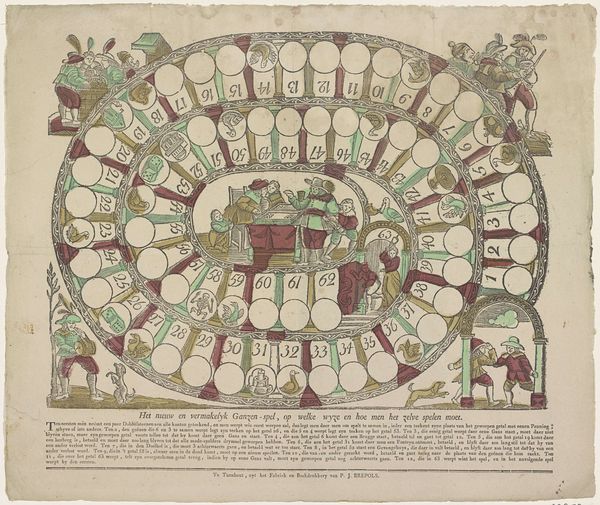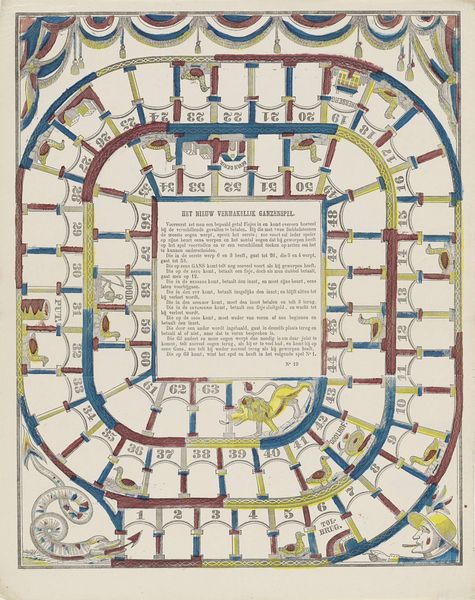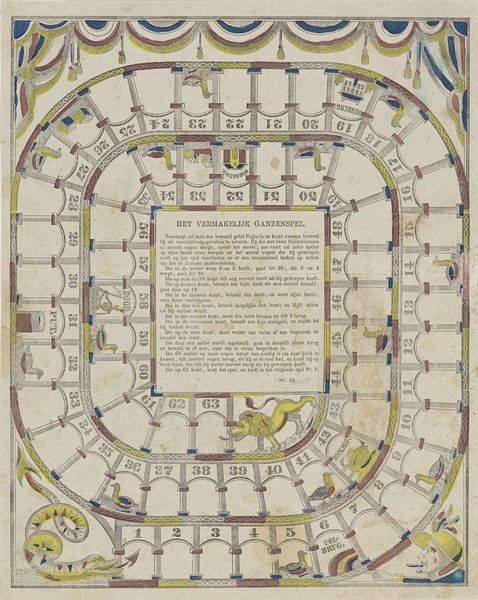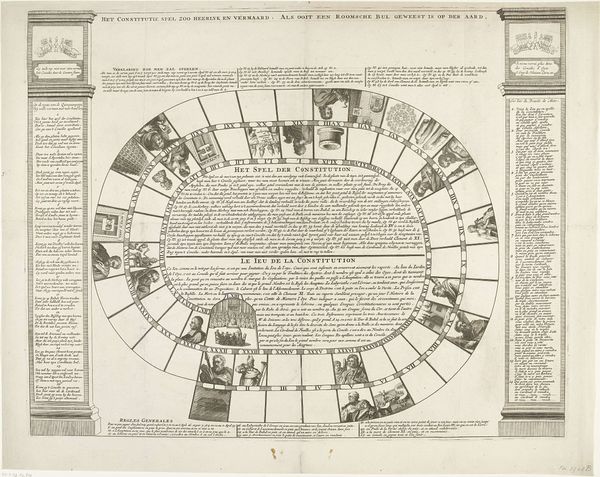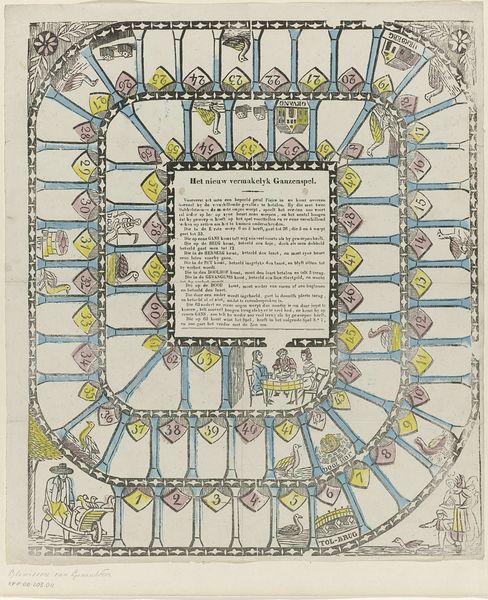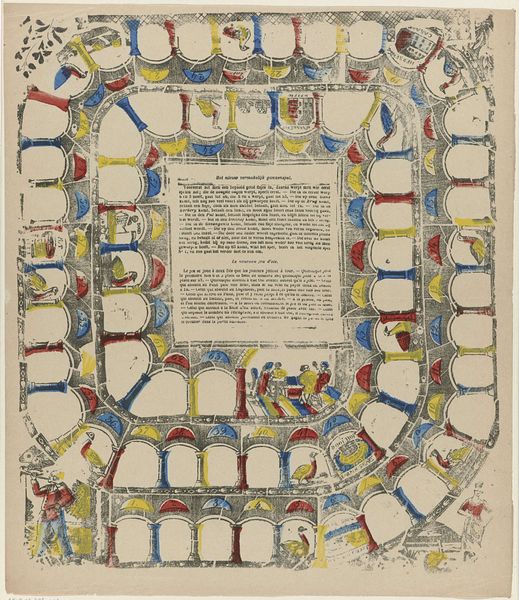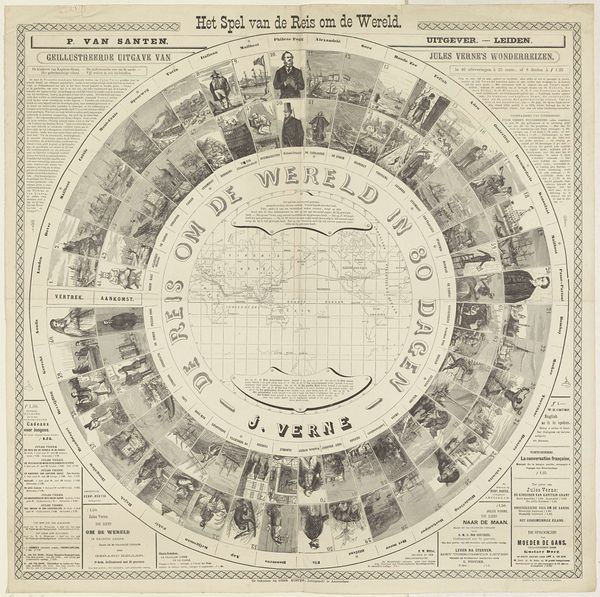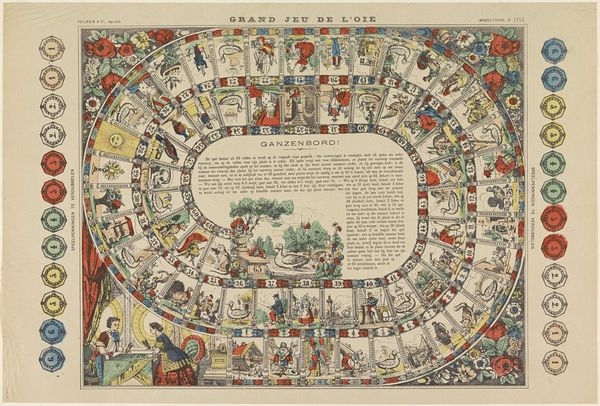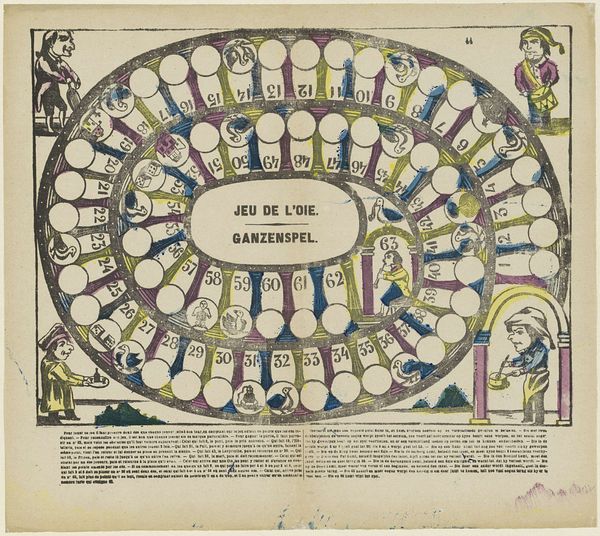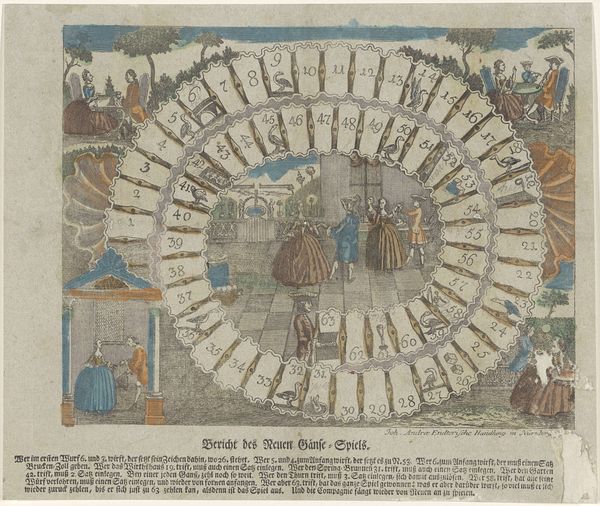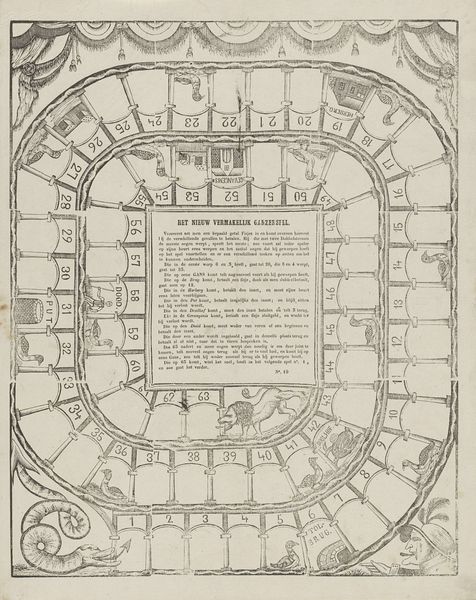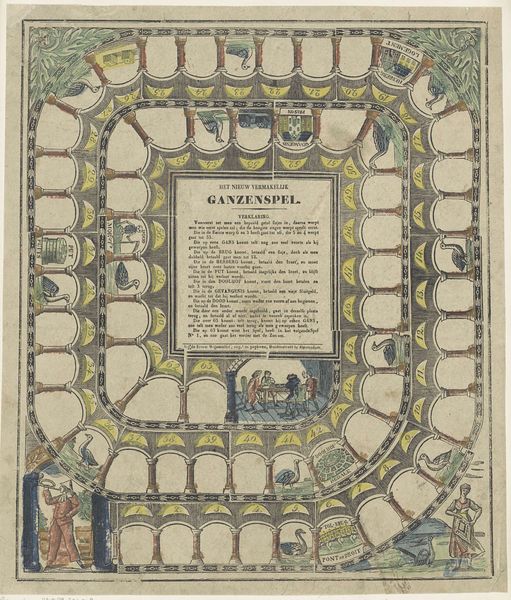
print, watercolor
# print
#
watercolor
#
romanticism
#
cityscape
#
genre-painting
#
watercolor
Dimensions: height 400 mm, width 530 mm
Copyright: Rijks Museum: Open Domain
Curator: This intriguing piece, “Het spel der monumenten van Parijs / Jeu des monumens de Paris,” which translates to "The game of monuments of Paris," comes to us from Jacobs en Meijers, dating back to 1833. It's a print with watercolor, offering a delicate window into Parisian life of the time. What's your immediate take? Editor: My first impression? A wonderfully organized dream. It’s like a map of the subconscious, Paris laid out as a game board. The pastel colors create a wistful, romantic feeling, almost as if you could float through the city. Curator: It does have that floating quality. Beyond the cityscape elements, you see the piece is actually laid out like a board game, almost like a nineteenth-century version of Monopoly, with key monuments as the properties to acquire, complete with its own set of rules, inscribed on the artwork itself. Editor: That makes total sense! Seeing it that way, the monuments themselves take on new symbolic layers. The Arc de Triomphe, naturally, becomes the starting point – a gateway to glory, perhaps? Curator: Exactly. And note the deliberate rendering of the various structures. They're not simply architectural depictions. There’s a real attention to evoking their essence. The mood and cultural significance of each space. The light. Everything tells a story beyond just bricks and mortar. Editor: Definitely. There is such clear thought put into not just what is represented but also *how*. For instance, including people bustling around creates a lively, engaged relationship between Parisians and their landmarks, while at the same time capturing an intimate portrayal of their routines, transforming historical structures into cultural symbols and emblems of national identity. Curator: I agree wholeheartedly. Consider, too, the medium—watercolor, applied through print. This suggests something more ephemeral, a city experienced as a series of fleeting impressions rather than a static entity. Editor: That feels true to me. There's a light, impermanent touch to everything, hinting at memory and imagination. Like looking through a haze of nostalgia. Even though it's a literal map and game, it also gives the sense of a place deeply cherished but forever slipping away. Curator: Beautifully put. It becomes a poignant reminder of how our experiences of place, history, and art all intertwine to create our sense of self. Editor: Indeed. And that maybe all places exist more as mental constructs shaped by collective stories and meanings. It is amazing that this piece encapsulates that sentiment.
Comments
No comments
Be the first to comment and join the conversation on the ultimate creative platform.
